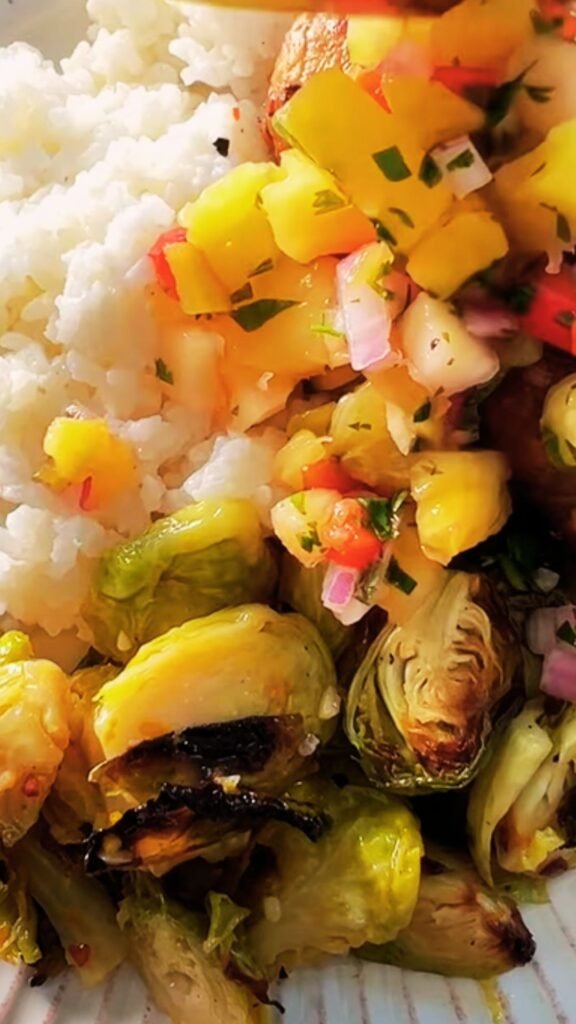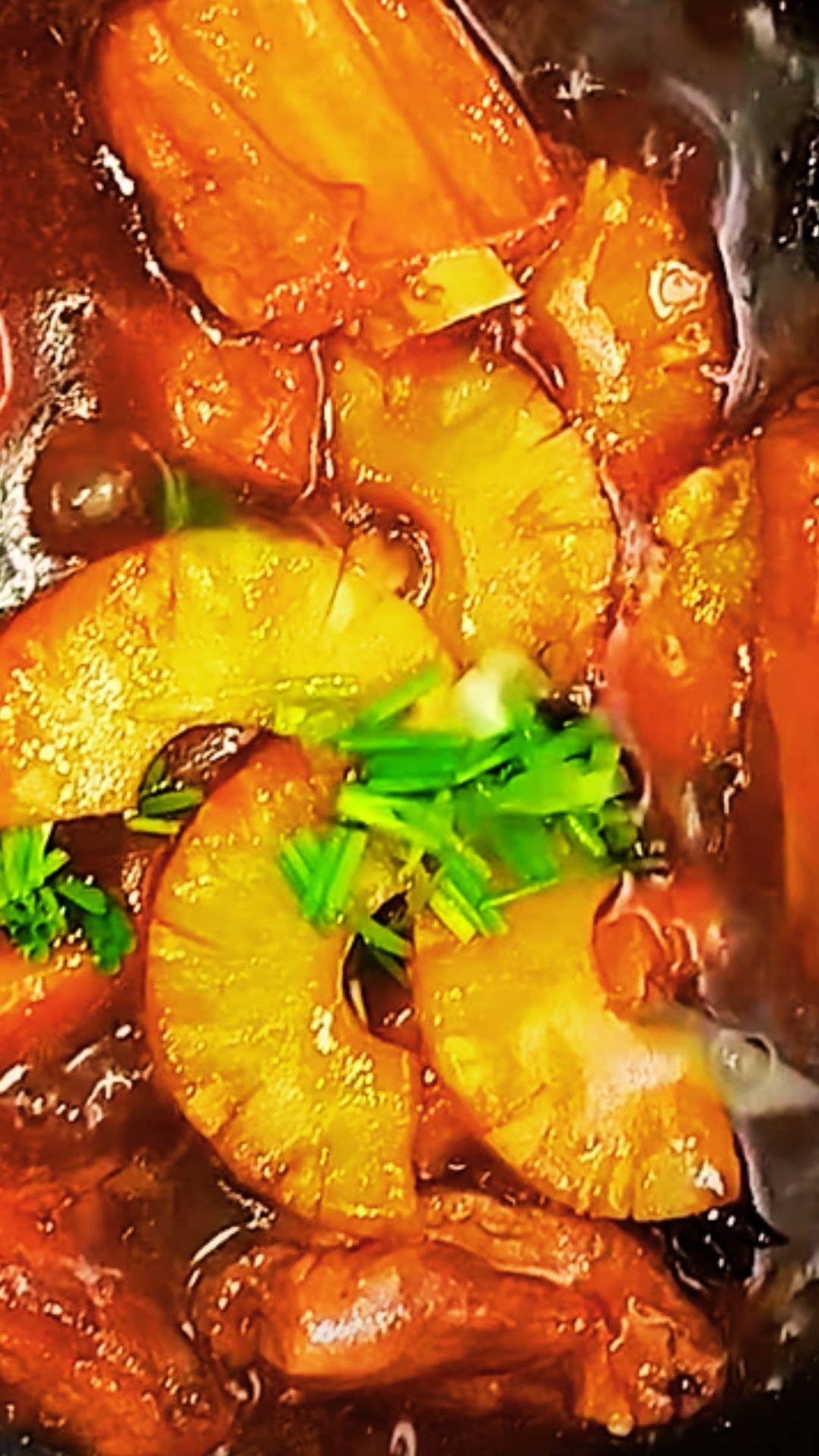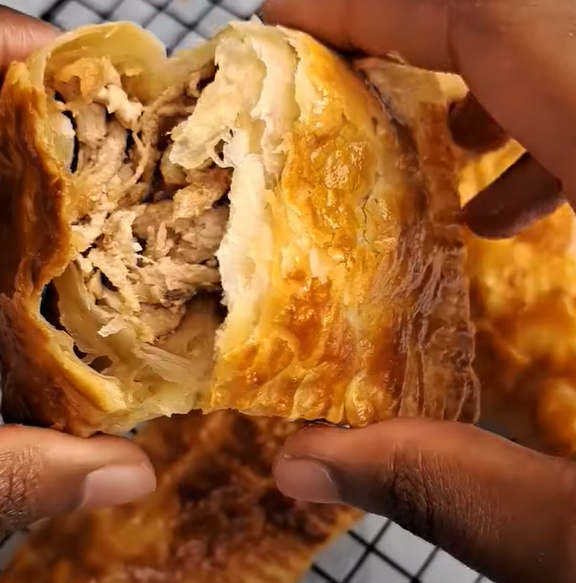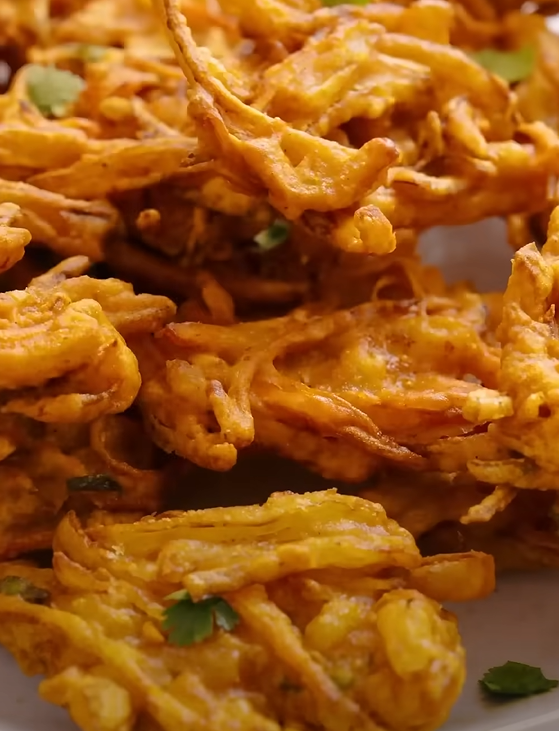I’ve been perfecting this Super Tender Pineapple Pork recipe for years, and I can confidently say it’s become one of my absolute favorite dishes to prepare for family gatherings. The combination of succulent pork, sweet pineapple, and aromatic spices creates a symphony of flavors that never fails to impress my guests. What makes this dish truly special is how the natural enzymes in pineapple work to tenderize the meat, resulting in incredibly soft, melt-in-your-mouth pork that practically falls apart with a fork.
The beauty of this recipe lies in its perfect balance of sweet and savory elements. The pineapple doesn’t just add sweetness – it brings a tropical brightness that cuts through the richness of the pork, while the carefully selected spices and seasonings create depth and complexity. I’ve discovered that the key to achieving that restaurant-quality tenderness is understanding the science behind how pineapple’s bromelain enzyme breaks down protein fibers, essentially pre-digesting the meat to create an incredibly tender texture.
Understanding the Magic Behind Pineapple and Pork
Bromelain: The natural enzyme found in fresh pineapple that breaks down protein chains, effectively tenderizing meat fibers from the inside out.
Caramelization: The process where natural sugars in pineapple develop complex flavors when exposed to heat, creating beautiful golden-brown color and rich taste.
Marinade Penetration: The depth at which acidic and enzymatic components of pineapple juice penetrate meat tissue, typically 2-3mm in the first hour.
Maillard Reaction: The chemical reaction between amino acids and sugars that occurs when browning the meat, creating hundreds of new flavor compounds.
When I first started experimenting with this recipe, I was amazed by how dramatically the pineapple transformed the texture of even the toughest cuts of pork. The secret isn’t just in using pineapple – it’s in understanding how to harness its natural properties while balancing all the other elements that make this dish extraordinary.
Essential Ingredients for Perfect Pineapple Pork
| Ingredient Category | Item | Quantity | Purpose | Quality Notes |
|---|---|---|---|---|
| Primary Protein | Pork shoulder/Boston butt | 3-4 lbs | Main protein base | Look for well-marbled meat with good fat distribution |
| Tenderizing Agent | Fresh pineapple chunks | 2 cups | Natural tenderizer and sweetness | Must be fresh; canned lacks bromelain enzyme |
| Aromatics | Yellow onion | 1 large | Flavor foundation | Sweet onions work best for caramelization |
| Aromatics | Fresh garlic | 6 cloves | Pungent flavor base | Avoid pre-minced; fresh provides better flavor |
| Liquid Base | Pineapple juice | 1 cup | Cooking liquid and marinade | 100% pure juice, no added sugars |
| Seasonings | Soy sauce | 3 tablespoons | Umami depth | Low-sodium preferred for better control |
| Seasonings | Brown sugar | 2 tablespoons | Caramelization aid | Dark brown sugar adds molasses notes |
| Spices | Ground ginger | 1 teaspoon | Warm spice complement | Fresh grated ginger can substitute (1 tablespoon) |
| Acid Balance | Rice vinegar | 2 tablespoons | Brightness and tang | Apple cider vinegar works as substitute |
| Heat Element | Red pepper flakes | 1/2 teaspoon | Gentle heat | Adjust to taste preference |
Step-by-Step Preparation Method
Preparing the Pork
I always start by selecting the right cut of pork. Pork shoulder or Boston butt works exceptionally well because these cuts have enough connective tissue and fat to remain moist during the long cooking process. I trim excess fat, leaving about a quarter-inch layer to maintain flavor and moisture.
The cutting technique is crucial here. I slice the pork into 2-inch cubes, cutting against the grain whenever possible. This creates more surface area for the pineapple enzymes to work their magic while ensuring each piece cooks evenly.
Creating the Perfect Marinade
My marinade combines fresh pineapple juice with soy sauce, creating both enzymatic tenderizing action and umami depth. I blend fresh pineapple chunks until smooth, then strain the juice to remove any pulp that might burn during cooking. The addition of brown sugar helps balance the acidity while promoting beautiful caramelization.
I’ve learned that marinating time is critical – too short and the enzymes don’t have enough time to work, too long and the meat can become mushy. My sweet spot is exactly 4-6 hours, which provides optimal tenderization without over-processing the meat.
The Cooking Process
- Initial Searing: I heat my heavy-bottomed pot or Dutch oven over medium-high heat with a tablespoon of neutral oil. The key is getting a proper sear on all sides of the pork pieces, which typically takes 8-10 minutes total.
- Building the Flavor Base: After removing the seared pork, I sauté the onions in the same pot, scraping up all those beautiful browned bits. This fond adds incredible depth to the final dish.
- Deglazing: I pour in the pineapple juice marinade, which immediately sizzles and steam, lifting all those caramelized flavors from the bottom of the pot.
- Slow Braising: I return the pork to the pot, add the fresh pineapple chunks, and bring everything to a gentle simmer. Then I cover and transfer to a 325°F oven for approximately 2.5-3 hours.
Temperature and Timing Guide
| Cooking Stage | Temperature | Duration | Internal Temp Goal | Visual Cues |
|---|---|---|---|---|
| Initial Searing | Medium-high heat | 2-3 minutes per side | N/A | Golden brown crust formation |
| Aromatics Sauté | Medium heat | 5-7 minutes | N/A | Onions translucent and fragrant |
| Braising Phase 1 | 325°F oven | 1.5 hours | 160°F | Liquid gently bubbling |
| Braising Phase 2 | 325°F oven | 1-1.5 hours | 190-200°F | Fork-tender, easily shredded |
| Final Reduction | Stovetop medium | 10-15 minutes | N/A | Sauce coats spoon |

Advanced Techniques for Superior Results
Controlling Moisture Levels
One challenge I’ve encountered is managing the moisture content during braising. Pineapple releases significant liquid as it cooks, which can dilute flavors if not properly managed. My solution involves partially uncovering the pot during the final hour of cooking, allowing excess moisture to evaporate while concentrating the flavors.
Achieving Perfect Sauce Consistency
The sauce should coat the back of a spoon but still flow easily. I achieve this by removing the tender pork pieces and reducing the braising liquid on the stovetop. This concentrates all those beautiful flavors while creating a glossy, restaurant-quality sauce that clings perfectly to the meat.
Flavor Layering Technique
I add ingredients in stages to build complex flavor profiles. The initial marinade provides the foundation, the searing creates depth through caramelization, and the final reduction concentrates everything into a harmonious blend. Each layer contributes distinct elements that work together seamlessly.
Nutritional Profile and Health Benefits
| Nutrient | Per Serving (6 oz) | Daily Value % | Health Benefits |
|---|---|---|---|
| Protein | 35g | 70% | Muscle maintenance and growth |
| Vitamin C | 45mg | 75% | Immune system support from pineapple |
| Thiamine (B1) | 0.8mg | 67% | Energy metabolism support |
| Manganese | 1.2mg | 52% | Bone health and antioxidant function |
| Potassium | 420mg | 12% | Heart health and blood pressure regulation |
| Iron | 2.8mg | 16% | Oxygen transport and energy production |
| Zinc | 4.2mg | 38% | Immune function and wound healing |
The combination of lean pork and fresh pineapple creates a surprisingly nutritious meal. Pork provides complete proteins with all essential amino acids, while pineapple contributes vitamin C, manganese, and beneficial enzymes. The slow braising method helps preserve these nutrients while making them more bioavailable.
Serving Suggestions and Accompaniments
Perfect Rice Pairings
I’ve found that jasmine rice works exceptionally well with this dish because its subtle floral notes complement the tropical flavors without competing. I prepare it with a touch of coconut milk and a pinch of salt, which creates a creamy texture that soaks up the pineapple sauce beautifully.
Brown rice offers a nuttier flavor profile and additional fiber, making it an excellent healthy alternative. I sometimes add toasted sesame seeds or chopped green onions to enhance the presentation and add textural interest.
Vegetable Companions
Steamed baby bok choy provides a perfect textural contrast with its crisp stems and tender leaves. The mild, slightly sweet flavor pairs beautifully with the rich pork and bright pineapple.
Roasted carrots bring natural sweetness that harmonizes with the pineapple while adding vibrant color to the plate. I cut them into diagonal pieces and roast them with a drizzle of sesame oil and a sprinkle of black sesame seeds.
Fresh Garnish Options
Chopped fresh cilantro adds a bright, herbaceous note that cuts through the richness of the dish. I also love adding thinly sliced green onions for a mild onion flavor and beautiful color contrast.
A squeeze of fresh lime juice just before serving brightens all the flavors and adds a citrusy zing that enhances the tropical character of the dish.
Storage and Reheating Guidelines
This dish actually improves with time, as the flavors continue to meld and develop. I store leftovers in the refrigerator for up to four days in airtight containers. The meat stays incredibly tender, and the sauce maintains its complex flavor profile.
For reheating, I prefer using the stovetop over low heat, stirring gently to prevent the meat from breaking apart. If the sauce has thickened too much during storage, I add a splash of pineapple juice or low-sodium chicken broth to restore the proper consistency.
The dish freezes beautifully for up to three months. I portion it into meal-sized containers, leaving some headspace for expansion. When ready to enjoy, I thaw it overnight in the refrigerator before reheating.
Troubleshooting Common Issues
Meat Becomes Too Soft
If the pork becomes overly tender or mushy, it’s usually due to over-marinating or excessive cooking time. The bromelain enzyme in pineapple is quite powerful, so I stick strictly to the 4-6 hour marinating window.
Sauce Too Sweet
When the sauce becomes overly sweet, I balance it with a tablespoon of rice vinegar or a squeeze of fresh lime juice. The acidity cuts through the sweetness while enhancing all the other flavors.
Insufficient Browning
Proper browning is crucial for flavor development. If the meat isn’t browning well, the pan might be overcrowded or not hot enough. I work in batches if necessary and ensure the pan is properly preheated.
Recipe Variations and Adaptations
Spicy Pineapple Pork
For those who enjoy heat, I add fresh jalapeños or Thai chilies during the sautéing stage. The capsaicin oils infuse throughout the braising liquid, creating a beautifully balanced sweet-and-spicy profile.
Slow Cooker Adaptation
This recipe adapts wonderfully to slow cooker preparation. After the initial searing and sautéing steps, I transfer everything to the slow cooker and cook on low for 6-8 hours. The results are equally tender and flavorful.
Instant Pot Version
Using a pressure cooker reduces cooking time to about 90 minutes total. I use the sauté function for browning, then pressure cook for 45 minutes with natural release. The texture is slightly different but equally delicious.
Q&A Section
Q: Can I use canned pineapple instead of fresh? I don’t recommend using canned pineapple because the canning process destroys the bromelain enzyme that’s essential for tenderizing the meat. Fresh pineapple is crucial for achieving that super-tender texture that makes this dish special.
Q: What’s the best cut of pork to use for this recipe? Pork shoulder or Boston butt works best because these cuts have enough connective tissue and marbling to stay moist during long braising. Leaner cuts like pork loin tend to dry out and don’t benefit as much from the pineapple’s tenderizing properties.
Q: How do I know when the pork is properly tender? The pork is ready when it easily shreds with a fork and has an internal temperature of 190-200°F. It should practically fall apart when you touch it with a utensil, and the fibers should separate easily.
Q: Can I make this dish ahead of time? Absolutely! This dish actually tastes better the next day as the flavors continue to develop. I often make it a day ahead for dinner parties. Just reheat gently on the stovetop, adding a splash of liquid if needed.
Q: Why does my sauce turn out too thin? Thin sauce usually results from not reducing the braising liquid sufficiently. After removing the tender pork, simmer the sauce uncovered until it coats the back of a spoon. This concentrates the flavors and creates the perfect consistency.
Q: How long can I marinate the pork? I recommend 4-6 hours maximum. The bromelain enzyme in pineapple is very active, and longer marinating times can make the meat mushy rather than tender. Even 30 minutes of marinating will provide some benefit if you’re short on time.
Q: Can I substitute pork with other meats? This technique works wonderfully with chicken thighs or beef chuck roast. Adjust cooking times accordingly – chicken will cook faster (about 1.5 hours), while beef might need slightly longer than pork.
Q: What should I do if my pineapple pork turns out too salty? If the dish is too salty, add a bit more fresh pineapple juice and a pinch of brown sugar to balance the flavors. You can also serve it over plain rice or add some unsalted vegetables to help absorb the excess salt.
Q: Is there a way to make this recipe healthier? You can trim more visible fat from the pork and use low-sodium soy sauce. The dish is already quite nutritious with plenty of protein and vitamin C from the pineapple. Serving it with brown rice and steamed vegetables makes it even healthier.
Q: Why is my meat tough even after long cooking? Tough meat after long cooking usually means the temperature was too high, causing the proteins to seize up rather than break down gently. Keep the braising temperature at a gentle simmer – you should see only occasional bubbles breaking the surface.
This Super Tender Pineapple Pork has become my go-to recipe when I want to create something truly special that brings people together around the dinner table. The combination of scientific understanding and traditional cooking techniques results in a dish that’s both impressive and deeply satisfying. Every time I make it, I’m reminded of why cooking is such a beautiful blend of art and science – when you understand how ingredients work together, you can create magic in your own kitchen.


